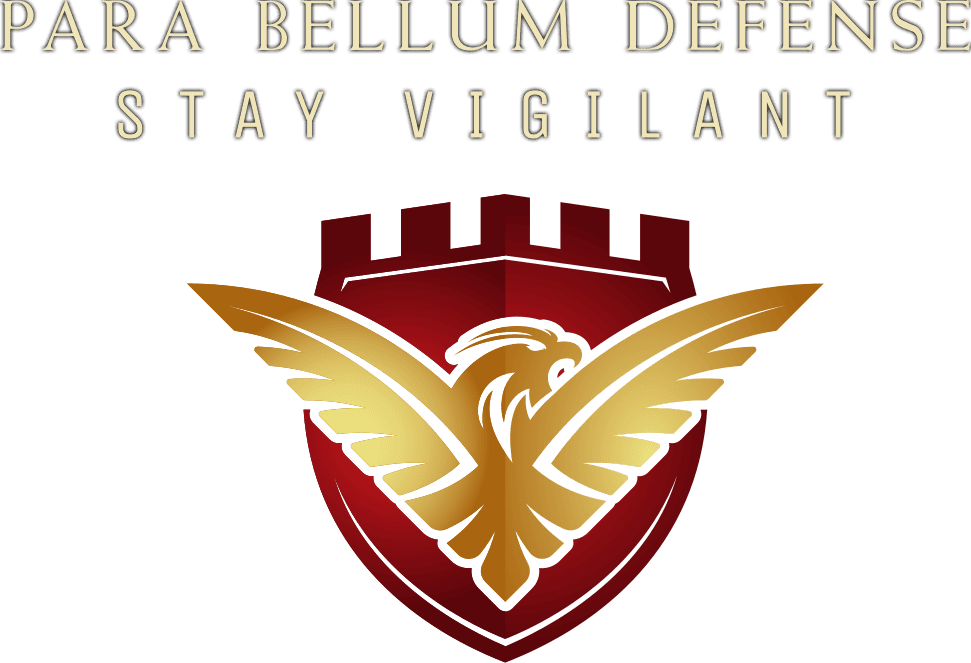
free shipping on orders over $25
We’re having a sale on all our products. Enter your email below to be notified about future sales.


We’re having a sale on all our products. Enter your email below to be notified about future sales.


In the chess game of life, you’re always a move away from facing an unexpected adversary. It’s essential you equip yourself with the skills to navigate these encounters without resorting to lethal force. By mastering non-lethal self-defense techniques, you’re not only protecting yourself but also diffusing potential threats with minimal harm.
From understanding situational awareness to the strategic use of pepper spray and stun guns, the array of options at your disposal is vast. However, knowing when and how to deploy these techniques requires insight and practice. Let’s explore how you can fortify your defenses while ensuring your actions remain within the bounds of ethical self-protection.
Before diving into specific techniques, it’s crucial you understand situational awareness, the cornerstone of non-lethal self-defense. It’s all about being aware of your environment and recognizing potential threats before they turn into actual problems. You’ve got to keep your head up, eyes scanning, and mind alert. This doesn’t mean you’re walking around paranoid; rather, you’re prepared and conscious of your surroundings.
Being observant helps you spot suspicious behavior or situations that feel off. Trust your gut; if something feels wrong, it probably is. It’s better to avoid a potentially dangerous situation than to find yourself in one without an exit strategy.
Knowing the layout of the places you frequent can be a lifesaver. Familiarize yourself with exits in buildings, safe zones, and even areas to avoid. This knowledge can help you move quickly and confidently if you need to get out of a situation fast.
Lastly, don’t forget the importance of blending in. Drawing unnecessary attention to yourself can sometimes make you a target. Dressing appropriately for your environment and acting confidently, without appearing confrontational, can help you navigate spaces safely. Remember, situational awareness is your first line of defense in protecting yourself without resorting to physical confrontation.
Understanding situational awareness sets a solid foundation, yet mastering verbal de-escalation amplifies your ability to defuse conflicts without physical force. When you’re faced with a tense situation, the words you choose can either escalate or calm the atmosphere. It’s not just what you say, but how you say it that counts.
Effective verbal de-escalation involves a combination of tone, pace, and empathy. Speaking in a calm, slow manner can help lower the tension, while showing understanding and empathy can often turn a potential adversary into someone more willing to listen and negotiate.
Here’s a quick guide to help you remember key aspects of verbal de-escalation:
| Do’s | Don’ts |
|---|---|
| Use a calm tone | Raise your voice |
| Listen actively | Interrupt |
| Express empathy | Make accusations |
In today’s increasingly uncertain world, it’s essential to familiarize yourself with non-lethal weapons as effective means for self-defense. These tools allow you to protect yourself while minimizing the risk of permanently harming an aggressor. It’s crucial to understand what’s available to you and how these options can fit into your personal safety plan.
Non-lethal weapons include a variety of devices designed to temporarily incapacitate or deter an attacker without causing serious or permanent injury. Here’s a brief overview of some popular choices:
Each of these non-lethal weapons has its own set of advantages and considerations. It’s important to choose one that you’re comfortable with and can carry confidently. Remember, the key to effective self-defense lies not only in having the right tools but also in knowing how to use them.
Pepper spray, often carried for self-defense, requires careful handling and knowledge to ensure its effective and safe use. You’ve got to know not just how to spray it, but also when and where it’s legal to do so. Keeping it accessible, yet secure, is also key to prevent accidental discharge or it being used against you.
Understanding pepper spray’s effects helps you anticipate the reaction of an assailant and your own safety. It causes temporary blindness, difficulty breathing, and a burning sensation, giving you time to escape. However, you must practice using it to avoid panic during an actual confrontation.
Here’s a quick guide to keep in mind:
| Aspect | Do’s | Don’ts |
|---|---|---|
| Legalities | Check local laws on possession & use | Assume it’s legal everywhere |
| Storage | Keep in an easily accessible location | Leave in extreme temperatures |
| Usage | Aim for the eyes and spray | Hesitate or use too close to yourself |
| Aftermath | Leave the area immediately | Try to apprehend the assailant |
After exploring the ins and outs of pepper spray, let’s now examine how stun guns can serve as another potent self-defense tool. Unlike pepper spray, which requires a bit of distance between you and an attacker, stun guns are effective at close range. They deliver a high-voltage, low-amperage electrical shock that can incapacitate an assailant, giving you precious time to escape. This doesn’t cause lasting harm but can be a decisive factor in self-defense situations.
Stun guns are particularly favored for their direct physical control over an attacker, without needing to aim as precisely as with pepper spray. Also, the psychological deterrence of a stun gun—often audible and visible through sparking—can sometimes prevent an attack before it begins.
Here are three key points to remember about stun guns:
Shifting focus to a more portable option, self-defense keychains offer a discreet yet effective way to protect yourself. These keychains aren’t just for holding your keys; they’re designed with your safety in mind. You can carry them everywhere, making them an ideal choice for those who prioritize convenience and ease of access.
There’s a variety of self-defense keychains available, each with its unique features. Some come equipped with loud alarms to attract attention and deter attackers, while others include sharp points or edges designed for striking an assailant in close encounters. Pepper spray keychains are also popular, allowing you to incapacitate an attacker from a distance.
When choosing a self-defense keychain, consider its usability under stress. It should be something you can easily wield without fumbling. Regular practice with your chosen tool is crucial; you need to be familiar with its operation to effectively use it in an emergency.
Before diving into the world of self-defense keychains, it’s crucial to master some basic self-defense techniques that can help keep you safe in various situations. These strategies don’t require any special tools and empower you to use your body as a powerful means of protection. Let’s focus on some essentials.
Knowing how to escape common holds can significantly increase your chances of safely getting out of a dangerous situation.
When someone grabs your wrist, stay calm. Rotate your wrist towards their thumb, the weakest part of their grip, and pull your arm away sharply. This move, called a wrist release, is simple yet effective.
If you’re caught in a bear hug from behind, where your arms are free, use your elbows. Strike backward, aiming for the attacker’s face or stomach. This should loosen their hold, allowing you to escape. If your arms are trapped, drop your weight and try to stomp on the attacker’s foot or kick their shin, making it painful for them to maintain their grip.
In the event of a front choke, your priority is to breathe. Tuck your chin down to protect your windpipe. Use your hands to grab the attacker’s wrist, pulling down hard while you turn away and escape their grasp.
In high-stress situations, maintaining your mental resilience is as crucial as mastering physical self-defense techniques. It’s about keeping a cool head when everything inside you screams panic. You’ve got to train your mind just like you do your body, making sure you’re as mentally fit as you’re physically.
Here’s how you can build that mental fortress, ensuring you’re prepared for any situation.
In the US, you might face minor legal issues for using pepper spray in self-defense, while in the UK, it’s considered an offensive weapon, leading to potential arrest. Laws vary significantly across countries.
Yes, you can effectively learn non-lethal self-defense techniques online. Look for highly-rated courses with interactive elements and positive reviews. They’ll provide valuable skills without needing a physical class.
Your physical disability might limit some non-lethal self-defense options, but it doesn’t leave you defenseless. Adaptive techniques exist, and with 1 in 4 adults in the U.S. having a disability, you’re not alone in adapting.
You’re pondering the environmental toll of making and tossing non-lethal self-defense gadgets, like pepper spray or stun guns. It’s key to weigh their ecological footprint against the personal safety they offer.
Ironically, you don’t need to be a superhero to learn non-lethal self-defense. Regardless of age or fitness, you’ll find the learning curve manageable. It’s more about technique than brute strength, so you’re in luck.
Para Bellum Defense
133 Palm Drive
Winter Haven, FL 33880
Telephone: 585-284-6669
